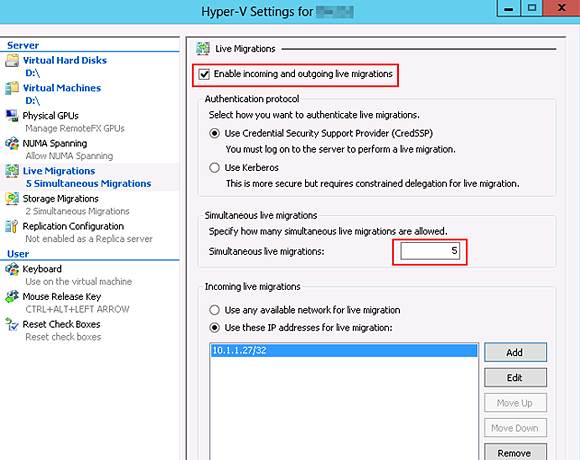

- #HYPER V SERVER 2008 R2 MANAGEMENT TOOLS WINDOWS 10 INSTALL#
- #HYPER V SERVER 2008 R2 MANAGEMENT TOOLS WINDOWS 10 FULL#
- #HYPER V SERVER 2008 R2 MANAGEMENT TOOLS WINDOWS 10 PLUS#
- #HYPER V SERVER 2008 R2 MANAGEMENT TOOLS WINDOWS 10 WINDOWS 7#
- #HYPER V SERVER 2008 R2 MANAGEMENT TOOLS WINDOWS 10 PROFESSIONAL#
In most environments nowadays, the only physical servers are the virtualization hosts, which makes the migration very important. Just bear in mind that it may not be the free virtualisation ride it seems.And then comes the time to migrate your old servers with Windows Server 2012 to Windows Server 2012 R2 Hyper-V with all the joys and headaches of upgrading your old servers. These features may not be that important for smaller companies but, regardless of who you are, Hyper-V Server 2008 R2 has a lot to offer.
#HYPER V SERVER 2008 R2 MANAGEMENT TOOLS WINDOWS 10 PLUS#
You also get core parking and hot swapping of virtual SCSI disks, plus live migration and the failover clustering needed to support it. Up to 384 VMs can now be hosted by each server (double the limit in the original version), with up to 512 virtual processors in total and a maximum of 64GB of RAM and 2TB of disk space per VM. That means support for host servers with up to eight processors or 64 cores, plus 1TB of RAM.
#HYPER V SERVER 2008 R2 MANAGEMENT TOOLS WINDOWS 10 FULL#
Moreover, what you end up with is a scalable virtualisation platform that now matches the full Windows Server 2008 R2 hypervisor.

Once up and running, the RSAT tools are pretty straightforward, with a very similar front end to those included in Windows Server.

This was perplexing as we'd expect a workgroup setup to be pretty common and we've had no such issues when deploying other hypervisors from Citrix, Parallels and VMware, all of which bundle management tools with their products - including the free ones. However, we had problems connecting them to our test server - especially on a workgroup network, where we ended up switching to a domain network.
#HYPER V SERVER 2008 R2 MANAGEMENT TOOLS WINDOWS 10 INSTALL#
The RSAT tools are no harder to install than any other application.
#HYPER V SERVER 2008 R2 MANAGEMENT TOOLS WINDOWS 10 PROFESSIONAL#
We expected to find an RSAT link on the Hyper-V Server website, but there wasn't one and we had to spend some time searching for the download (which can only be installed on PCs running the Enterprise, Professional or Ultimate editions of Windows 7).
#HYPER V SERVER 2008 R2 MANAGEMENT TOOLS WINDOWS 10 WINDOWS 7#
Indeed they've been around for quite a number of years, but you'll need Windows 7 to host the latest release, capable of managing Hyper-V Server 2008 R2. Free management tools for Hyper-V Server are available as part of a package called Remote Server Administration Tools (RSAT). However, Windows licences are not included with Hyper-V Server, so you'll have to buy into Windows Server anyway, unless you already have licences you can employ - or if you only want to host Linux VMs. Licensing is a an often-overlooked consideration, as with Windows Server 2008 you get a licence to run Windows Server on both a physical and a virtual machine. However, that's not necessarily a good idea, for a number of reasons.įailover clustering and live migration are new in the R2 version of Hyper-V Server 2008, but you'll still need to add management tools. In which case it's tempting to leave Windows Server 2008 out of the equation and consider installing Hyper-V as a standalone solution. Unfortunately, lower down the food chain, smaller companies may find this approach a little expensive. Also, System Centre Virtual Machine Manager 2008 (SCVMM 2008) has also been updated to provide cross-server management tools for both R2 implementations, with identical functionality regardless of whether you're using the full hypervisor or the standalone version. You can then use the same Hyper-V and Failover Cluster manager tools included with Windows Server 2008 R2 to manage the server and do things like join it to a failover cluster, create, clone and migrate VMs and so on. That done, you end up with the same text-based GUI as the previous release, but it's easy to connect a new server to the network and join it to a domain. Instead, Server Core is loaded as part of an automated setup routine that requires very little operator attention. The main advantage is that there's no need to install Windows before starting. In our tests it took no more than 30 minutes to configure a new server - even less once we'd downloaded the free boot image and burned it to DVD. That's partly because it's free, but equally because it speeds up and simplifies server deployment. In its target enterprise market, where it will be deployed together with the full Windows Server 2008 product, Hyper-V Server makes a lot of sense. However, management tools remain an extra so, by itself, Hyper-V Server 2008 R2 shouldn't be considered a self-contained virtualisation solution. In essence, that means greater scalability, plus the inclusion of VM migration tools left out of the original release - including live migration with minimal downtime. The mid-term R2 refresh of Hyper-V Server 2008 sees Microsoft's free bare-metal hypervisor enhanced to match the capabilities of its full Windows Server 2008 R2 implementation.


 0 kommentar(er)
0 kommentar(er)
